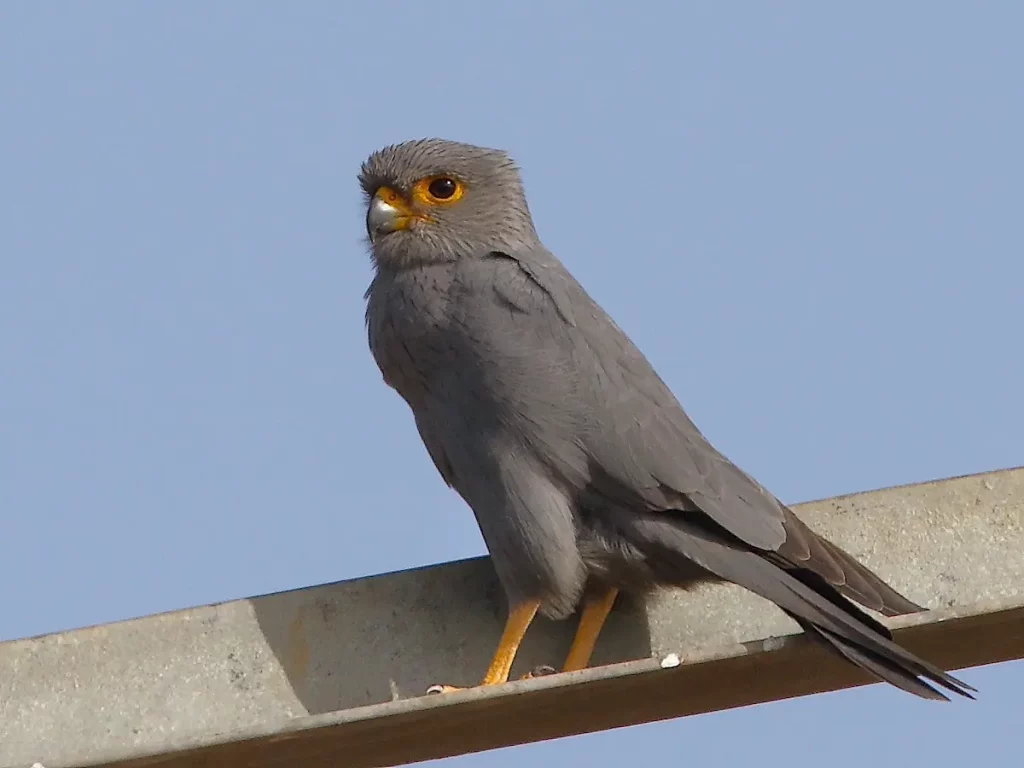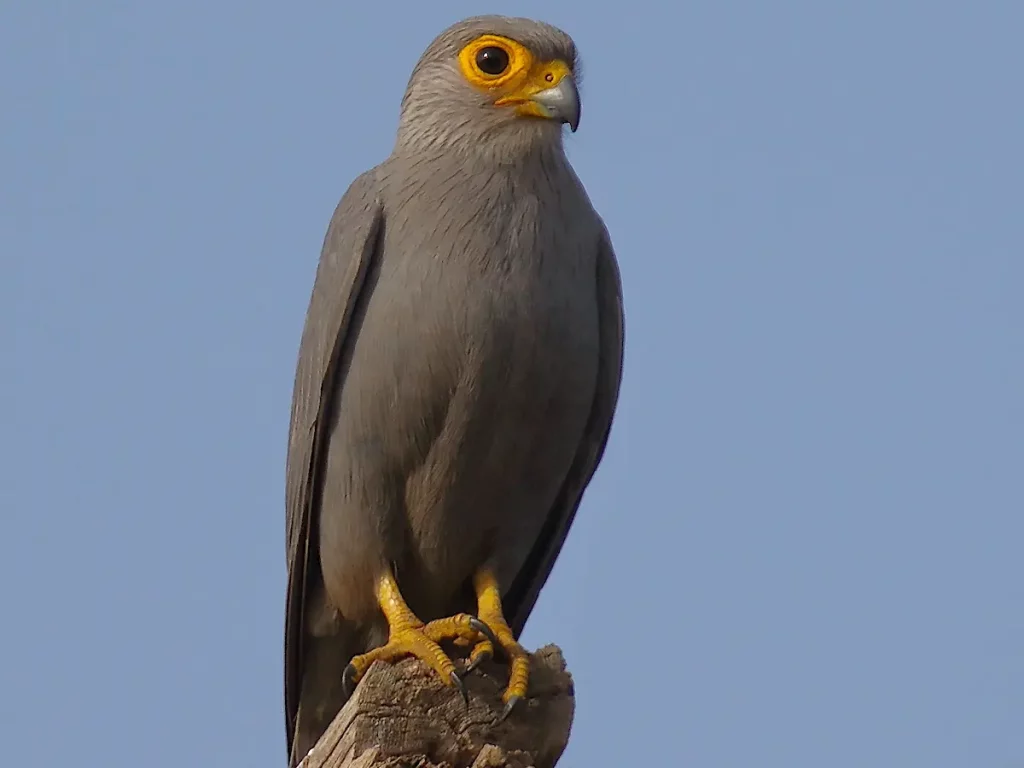Grey Kestrel, whenever I see one I think about the 1969 film by Ken Loach. A majestic bird of prey indeed and found in The Gambia as well as Barnsley, West Yorkshire.


Bird information.
Where can we see a Grey Kestrel?
The pictures above were photographed at Pajem Community Forest and at Pirang Faraba Banta. However, it likes to be in savannas, open woodland, forest clearings and areas with palm trees, close to water.
What does it look like?
It is a fairly small, stocky kestrel with a large, flat-topped head and fairly short wings that don’t reach past the tip of the tail when at rest. It is 28–33 cm long with a wingspan of 58–72 cm and a weight of up to 300 grams. The female is 4-11% larger and 5-11% heavier than the male. The plumage of the adult is uniformly dark grey apart from darker wingtips, faint dark streaking on the body and slightly barred flight feathers. The feet and cere are yellow and there is bare yellow skin around the eye. The most similar species is the sooty falcon which has a more rounded head, long wings extending past the tail and less yellow around the eye.
Juvenile grey kestrels are browner than the adults with a greenish cere and greenish around the eye. Juvenile Dickinson’s kestrels are similar but have a barred tail and a more strongly barred underwing. Source Wikipedia.
What does it feed on?
They feed on small mammals such as bats, small birds, reptiles, amphibians, insects, and worms.
Want to know an interesting Factoid?
One of only a few birds of prey which will eat vegetable matter, in this case, Palm nut.
How does a Grey kestrel sound?
Its call is a shrill, chattering call with a rattling whistle.
